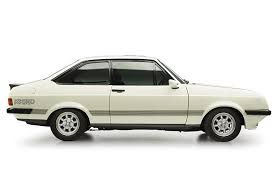


This edition of the Mitsubishi Lancer Evo VIII 260 is the 5 speed / Manual version and was first brought out in 2003. This was at around the same time as the introduction of the 2004 Westfield Sport 2000S and the 2004 Mitsubishi Lancer Evo VIII MR FQ 400.This particular Mitsubishi Lancer has a 1997cc Turbo Petrol powerplant with 4 cylinders in a St formation.
The Lancer shares its Petrol St4 engine configuration with the likes of the 2019 Ariel Atom 4 2.0 Turbo and the 2013 Caterham 7 620 R 2.0 L Supercharged. If you're looking for other fast cars which share the Lancer's All Wheel Drive, Saloon combination then how about the or the .
Weighing in at 1470 kgs (3240 lbs) this makes the Mitsubishi Lancer Evo VIII 260 in the same weight category as the 2023 Lotus Emira First Edition i4 2.0 Turbo or the give or take 50kg.
![Hyundai i30 N Performance 2.0 Turbo - [2022] image Hyundai i30 N Performance 2.0 Turbo - [2022] image](/editionimages/2380.jpg)
The Mitsubishi Lancer shares the same bhp with the 2022 Hyundai i30 N Performance 2.0 Turbo (276 bhp)
In terms of power the 1997cc 16V St4 engine produces 261 bhp (194 kW) @ 6500 rpm similar to the 2022 Hyundai i30 N Performance 2.0 Turbo (276 bhp) or the 2021 Ford Mustang Mach-E AWD (266 bhp).
The Turbo St4 throws out 262 lb-ft (355.2 Nm) @ 3500 rpm placing it with cars of similar torque performance figures such as the 2023 Toyota Corolla GR Circuit Edition 1.6 Turbo (273 lb-ft) or the 2022 Toyota Corolla GR 1.6 Turbo (273 lb-ft).
If one combines the weight with power or torque performance for the Mitsubishi Lancer you can get a better idea of it's real world performance.
![Porsche 928 S4 5.0L V8 - [1986] image Porsche 928 S4 5.0L V8 - [1986] image](/editionimages/849.jpg)
The 1986 Porsche 928 S4 5.0L V8 (202.5 bhp per ton) has similar Bhp Per Ton stats as the Mitsubishi Lancer.
The Mitsubishi Lancer has a Power to weight ratio of 177.5 bhp per ton and 178.2 lb-ft per ton. Bhp Per Ton figures of the 2003 Lancer competing with the 1986 Porsche 928 S4 5.0L V8 (202.5 bhp per ton) or the 1992 Subaru Impreza WRX Type RA - Classic JDM (202.5 bhp per ton).
If you agree with the late great Carroll Shelby then arguably an even better indicator of potential performance, Torque. Use weight as well and you end up with - Torque per ton, with the Mitsubishi Lancer generating around 178.2 lb-ft per ton. If you're curious as to what other cars have as much torque to weight then look no further than the 2006 Audi R8 4.2 FSI Quattro V8 (203.2 lb-ft per ton) or the 2001 Mercedes C Class 32 AMG (203.0 lb-ft per ton).
With a 0-60mph time of 5.60 secs or a 0-100km/h (0-62mph) of 5.8 secs, this made the Mitsubishi Lancer Evo VIII 260 as fast as the 2022 Volkswagen-VW Arteon 2.0T AWD (5.60 secs) the 2022 Volkswagen-VW Arteon 2.0T (5.60 secs) the 2020 Maserati Ghibli GranSport Petrol Hybrid (5.60 secs) the or the 2019 Tesla Model 3 Standard Range (5.60 secs). This Mitsubishi Lancer Evo VIII 260 is also faster than the 2022 Hyundai i30 N Performance 2.0 Turbo (5.70 secs) the 2019 Ford Focus ST 2.3 EcoBoost Wagon (5.70 secs) the 2016 Volkswagen-VW Golf GTi 2.0 Turbo Clubsport (5.70 secs) the and the 2014 Seat Leon Cupra 280 (5.70 secs).
When talking about the performance of the Mitsubishi Lancer on the drag strip it can reach a quarter mile in an estimated 14.01 secs @ 97.6 mph. Similar performance down the quarter mile can be found with the the 1965 Ford Mustang Hardtop 289 4.7 V8 (13.96 secs), the 1965 Ford Mustang 289 Fastback 4.7 V8 (13.96 secs), and the 1992 BMW 8 Series 850 CSi 5.6 V12 E31 (14.00 secs).
Modern performance cars are often artificially restricted to 155mph. The 2003 version of the Mitsubishi Lancer Evo VIII 260 has a maximum speed of 152mph.
If maxing out your car on the AutoBahn is your thing and you're wondering what's faster than the 2003 Mitsubishi Lancer Evo VIII 260 then how about the 2020 Ford Mustang Bullitt 5.0 V8 (163 mph), the 2019 Renault Megane RS 1.8 Turbo 300 Trophy-R (163 mph), or the 1996 Lotus Esprit 2.0 Turbo GT3 (163 mph).










Buick Riviera 6.6 V8
Engine: Naturally Aspirated Petrol | 6555cc 16v V8
Top Speed: 123 mph
0-60mph: 8.10 seconds

Aston-Martin Cygnet 1.3L Launch Edition
Engine: Naturally Aspirated Petrol | 1329cc 16v St4
Top Speed: 170.5 kph
0-100kph: 11.6 seconds



















